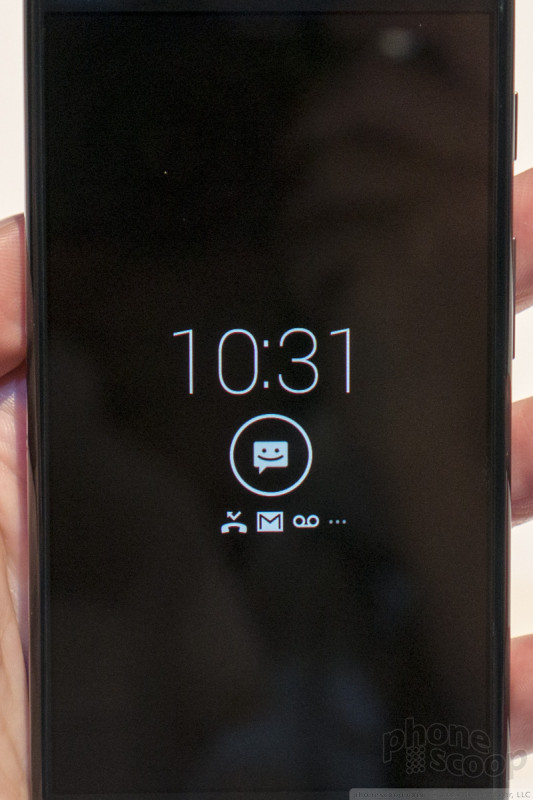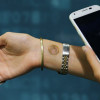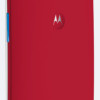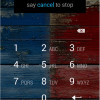Hands-On: MOTO X
As interesting as the MOTO X's hardware is, the software a bit more interesting. If you've been following the evolution of Google's Android platform over the years, you probably know what's on deck with the MOTO X. There are three big features that it is introducing on the phone that will help to set the device apart from the competition.
Of course, the device runs Android 4.2 Jelly Bean. There's no word on when or if it will be updated to Android 4.3 (or other) version of Android. Most of the user interface looks and behaves just like it does within stok Android. The new features are Touchless Control, Quick Capture, and Active Display.
Touchless Control
This is Google's more formal stab at Apple's Siri. It is an expansion of Google Now and is used to issue voice commands that wake the device and then perform tasks. First, users have to train the software to recognize their voice. There's a tutorial baked into the phone. You repeat the catchphrase "OK Google Now" and the MOTO X learns your voice and will only awaken when you say the phrase.
The phrase can be uttered when the phone is asleep or awake. Google wanted the feature to be voice-activated to it would be easier to initiate in circumstances where using your hands to interact with the phone might not be safe or plausible. Speak the phrase and follow it with a command. The whole thing would sound something like this: "OK Google Now, call Rich Brome." And bingo, that's what the MOTO X will do. Or, "OK Google Now, did the Yankees beat Boston last night?" And bingo, it will tell you, and so on and so forth.
Touchless Control can be used with security. You can always get to voice calls, even when there's a passcode for the device. The MOTO X has to be unlocked first, however, in order to access any other function of Touchless Control.
Quick Capture
This feature was designed to speed up the process of taking pictures. According to Motorola's research, no one uses real cameras any more and most of us capture everyday images with our smartphones. It can be clunky to pull a smartphone out of your pocket, wake the screen, find the right shortcut, and launch the camera. It's easy to miss the shot you want. Thus, Quick Capture was invented.
The idea is simple. Pull the X out of your pocket, twist it a couple of times with you wrist, and boom the camera launched. Google says the X can go from pocket to capturing images in two seconds. Based on my tests, that's about right. The feature does have to be enabled, though. You can turn it on/off directly in the camera app. It's a good idea and executed well. (If you're wondering why Google picked a twisting gesture, Rick Osterloh told us that they tested thousands of gestures and the twisting movement was the easiest to learn and the quickest to enact.)
Active Display
This feature also appears on the Motorola DROIDs for Verizon Wireless.
According to Motorola's research, lots of people wake up their phones 50 to 60 times a day, but only keep the display on for 10 to 15 seconds. Motorola said when the phone is used thus, it's because people are checking the time and to see missed messages and/or notifications. Active Display is meant to pull some of that information out of the notification curtain and get it onto the lock screen where it is more useful.
With Active Display initiated, the X will display the time pretty much any time the X is moved around. In other words, if you flip it over, pull it out of your pocket, or even nudge it, the time will flash on the screen. The clock is accompanied, though, by notifications. So if you receive some emails, some messages, and miss a call, you'll see those notifications below the clock. You can prioritize the notifications. So if you get an email, the email shows up in a bubble. Long press on the bubble, and the X will show a preview of that email (or message, or call log) at the top of the screen. You can then choose to dismiss the notification and see the next one, open the message, or let the screen go dark again.
Motorola says that this can help cut down on battery drain, as some of the vital information we check when we turn our displays on is visible right away without lighting up the entire display.































 Motorola Debuts Digital Tattoo for Unlocking Moto X
Motorola Debuts Digital Tattoo for Unlocking Moto X
 Motorola Debuts 64GB Moto X
Motorola Debuts 64GB Moto X
 Moto X Goes to College, Wears School Colors with Pride
Moto X Goes to College, Wears School Colors with Pride
 Motorola Refreshes Gallery App
Motorola Refreshes Gallery App
 Motorola's Touchless Control App Better with PIN Codes
Motorola's Touchless Control App Better with PIN Codes
 Motorola Moto X (GSM, 1st gen.)
Motorola Moto X (GSM, 1st gen.)
 Motorola Moto X (Sprint, 1st gen.)
Motorola Moto X (Sprint, 1st gen.)
 Motorola Moto X (Verizon, 1st gen.)
Motorola Moto X (Verizon, 1st gen.)


